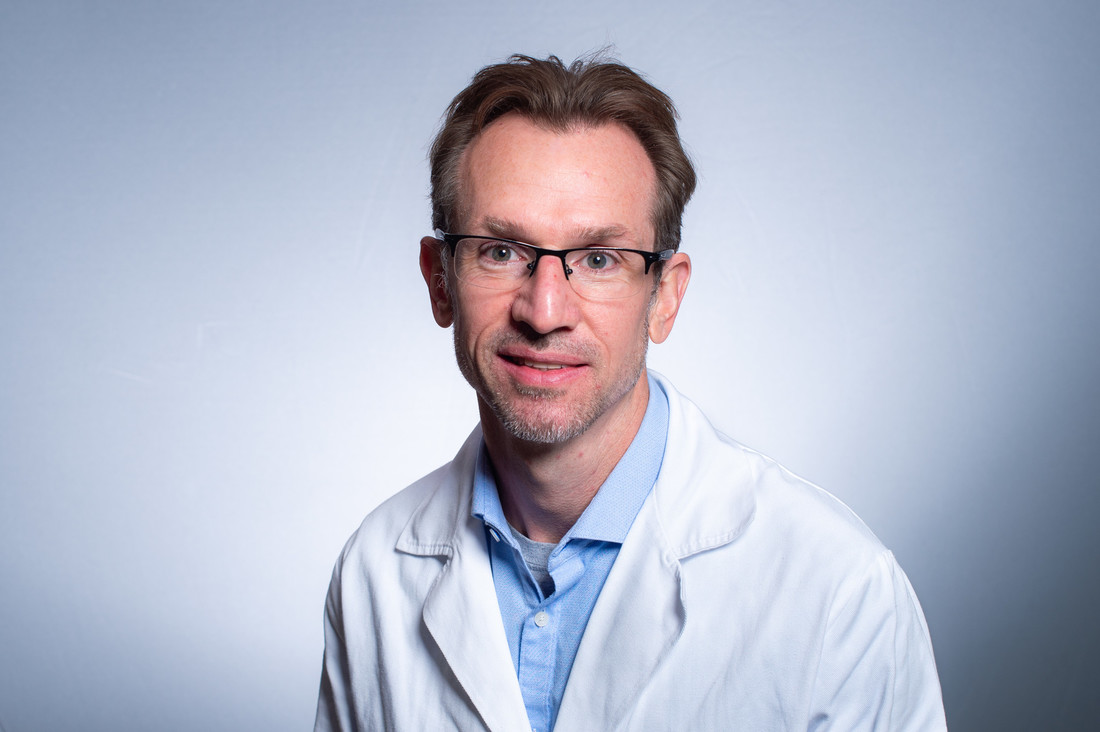
 Nathaniel Erdmann, M.D., Ph.D., assistant professor in the Division of Infectious Diseases, is the latest winner of the School of Medicine’s Featured Discovery. This initiative celebrates important research from School of Medicine faculty members.
Nathaniel Erdmann, M.D., Ph.D., assistant professor in the Division of Infectious Diseases, is the latest winner of the School of Medicine’s Featured Discovery. This initiative celebrates important research from School of Medicine faculty members.
Erdmann’s study, “Sustained cellular immune dysregulation in individuals recovering from SARS-CoV-2 infection,” published in The Journal of Clinical Investigation, researched disease pathogenesis and immune cell subsets in hospitalized and non-hospitalized individuals.
Along with several others from UAB in the Division of Infectious Diseases and the Department of Biostatistics, Erdmann found that in hospitalized patients, many adaptive and innate immune cells were decreased in frequency (with the exception of B lymphocytes which increased), when compared to healthy and convalesced individuals. The study’s findings show increased frequencies of some T-cell activation markers in hospitalized patients, with other T-cell activation/exhaustion markers remaining elevated in hospitalized and non-hospitalized individuals. B cells had a similar pattern of activation/exhaustion. Changes in T-cell activation/exhaustion in non-hospitalized patients were found to positively correlate with age. Severely infected individuals had increased expression of activation and exhaustion markers. These data suggest a prolonged period of immune dysregulation following SARS-CoV-2 infection.
This knowledge of immune function will contribute to more in-depth research, as it highlights the need for additional studies investigating immune dysregulation in convalescent individuals. Moreover, it will contribute to effective therapeutics and more positive outcomes for patients with SARS-CoV-2. Read the full publication here.
The School of Medicine communications staff sat down with Dr. Erdmann to gain insights about the research of this study, UAB, and the science community.
Q: What compelled you to pursue this research?
understand the underlying immunologic response. This project was designed to leverage the samples we were collecting from the first COVID-infected patients quickly and in a way that would inform key aspects of the acute and early convalesced immunologic response.
Q: What was your most unexpected finding?
We expected to see significant inflammatory derangements in the setting of acute COVID-19, as this was clearly a major component of the clinical disease and was supported by initial reports during the outbreak. What surprised us was the persistence of some of these changes that were evident in patients, even in the setting of mild to moderate disease.
Q: How do you feel your research will impact the science community?
This effort helped define immune responses in acute and convalesced patients, contributing to this rapidly growing and changing field. Unique to our study, is the evidence for persistent immunologic changes. This may be relevant to better understanding some of the long term effects of COVID-19 in patients with persistent symptoms, now referred to as ‘long COVID’.
Q: When did you know you had an important discovery?
In regards to COVID-19, early in the pandemic any well conducted study had value because there was so little information. The challenge was gathering the appropriate samples and evaluating them in an impactful way. Once we had the data, many of the acute immunologic changes were not unexpected, but how these findings persist was not something we expected at the outset.
Q: What do you find makes the science community here (at UAB) unique?
A consistent strength of the scientific community here at UAB is the willingness to collaborate. The challenges of conducting meaningful work during a developing pandemic were immense, including patient recruitment, sample collection, sample processing, conducting the experimental assays with limited staff availability. Each step required unique solutions. In the end, one of the strengths of the effort was the complementary efforts of the multiple investigators involved, each with their own particular areas of expertise that better informed the whole.
